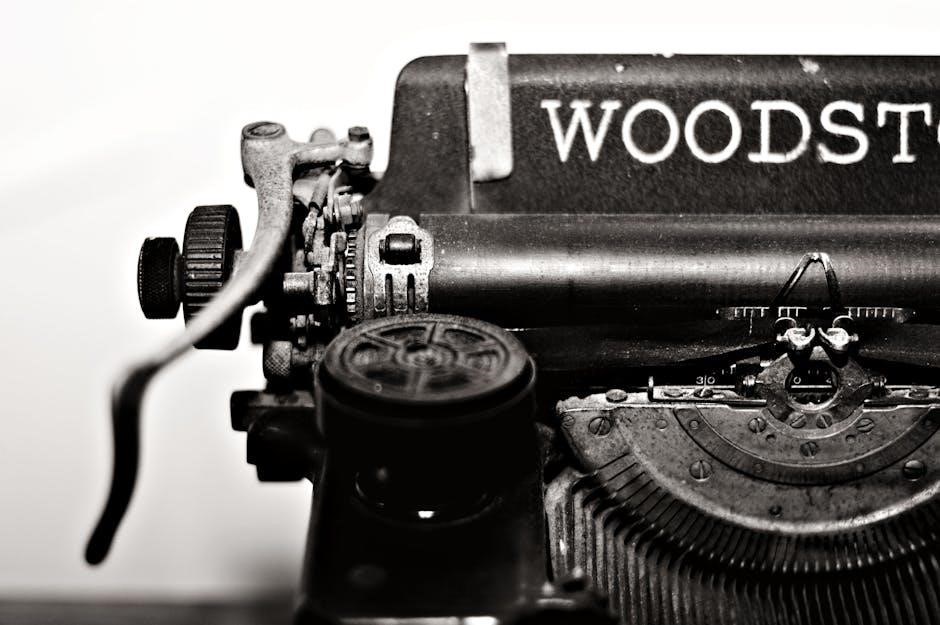manual metal shear

Manual metal shears are essential tools for cutting metal sheets, offering precision and versatility in workshops, fabrication, and small businesses. They are easy to use, cost-effective, and ideal for various metalworking projects.
What Are Manual Metal Shears?
Manual metal shears are portable, handheld or bench-mounted tools designed for cutting metal sheets or plates. They operate via a lever mechanism, providing precise control over cuts. These shears are ideal for intricate shapes and small-scale metalworking projects.
Commonly used in workshops and small businesses, manual shears are available in various models, such as throatless or alligator styles, catering to different metal types and thicknesses. They are versatile, easy to use, and suitable for both professionals and hobbyists, offering a cost-effective solution for metal fabrication needs.
Importance of Manual Metal Shears in Workshops and Small Businesses
Manual metal shears are indispensable in workshops and small businesses for their precision, portability, and ease of use. They enable quick, accurate cuts in metal sheets, making them ideal for small-scale fabrication and detailing work. These tools are cost-effective, eliminating the need for expensive machinery, and are versatile enough to handle various metal types and thicknesses.
Their compact design and manual operation make them perfect for workshops with limited space or resources. They are essential for crafts, repairs, and custom projects, providing businesses with flexibility and efficiency in metalworking tasks.
Types of Manual Metal Shears
Manual metal shears come in various types, including lever, throatless, and alligator shears, each designed for specific cutting needs and metalworking applications.
- Lever shears for straight cuts.
- Throatless shears for curved cuts.
- Alligator shears for heavy-duty materials.
Lever Shears
Lever shears are a popular type of manual metal shear, known for their durability and precision. They are typically bench-mounted and operated with a lever mechanism, making them ideal for cutting straight edges in metal sheets. These shears are suitable for various materials, including mild steel, aluminum, and non-ferrous metals. Lever shears often feature adjustable throat depths and back gauges, allowing users to customize cuts for different projects. They are widely used in metal fabrication, construction, and HVAC industries due to their reliability and ease of use. Regular maintenance ensures optimal performance and longevity.
- Bench-mounted design for stability.
- Suitable for straight cuts and thin materials.
- Adjustable features for precise cutting.
Throatless Shears
Throatless shears are highly versatile tools designed for cutting curved or irregular shapes in sheet metal. Unlike traditional shears, they have no fixed throat, allowing for unlimited flexibility in cutting patterns. These shears are ideal for crafting intricate designs and are widely used in metal fabrication, HVAC, and hobby projects. They feature a robust frame and durable blades, ensuring precise cuts with minimal distortion. Throatless shears are easy to operate and maintain, making them a favorite among professionals and DIY enthusiasts alike. Their versatility and adaptability make them essential for complex metalworking tasks.
- Ideal for curved or irregular cuts.
- No fixed throat for unlimited flexibility.
- Suitable for both professionals and hobbyists.
Alligator Shears
Alligator shears are robust, heavy-duty tools designed for cutting thick metal materials with ease. Known for their powerful jaw-like blades, they are ideal for heavy-duty applications such as cutting steel plates, bars, and scrap metal. These shears are commonly used in metal recycling, construction, and industrial workshops. Their durable construction ensures long-lasting performance, making them a reliable choice for demanding tasks. Alligator shears are also versatile, capable of handling various metal types and thicknesses, ensuring precise cuts even in tough conditions.
Regular maintenance is essential to maintain their cutting efficiency and longevity.

Key Features of Manual Metal Shears
Manual metal shears feature adjustable throat depths, durable blade materials, and precise cutting capacities, ensuring versatility, efficiency, and reliability in various metalworking tasks.
Throat Depth and Cutting Capacity
Manual metal shears are designed with varying throat depths, allowing for precise cutting of different metal sheet thicknesses. The cutting capacity depends on the shear’s size and type, with smaller models handling thinner sheets and larger ones capable of cutting thicker materials. Adjustable throat depths enable users to customize the tool for specific projects, ensuring clean, distortion-free cuts. This feature, combined with robust blade materials, makes manual shears versatile for cutting carbon steel, non-ferrous metals, and even plastics, catering to diverse metalworking needs.
Blade Types and Materials
Manual metal shears feature high-carbon steel blades for durability and sharpness, ensuring precise cuts. Straight-edge blades are ideal for straight cuts, while curved-edge blades are suited for smooth, rounded cuts. Some models include titanium-coated blades for enhanced rust resistance. Blade materials are chosen for their hardness and ability to maintain sharpness, reducing the need for frequent sharpening. Proper blade selection depends on the type of metal being cut, ensuring optimal performance and longevity of the shear. Regular maintenance, like sharpening, is essential to preserve cutting efficiency and accuracy.
Adjustable Back Gauge
An adjustable back gauge is a crucial feature in manual metal shears, enabling precise control over the cutting position. It allows users to set the desired measurement for consistent cuts. The gauge is typically adjusted manually or mechanically, ensuring accuracy for repetitive tasks. This feature is especially useful for cutting multiple pieces to the same length. By enhancing precision, it reduces waste and improves efficiency in metalworking projects. The adjustable back gauge is a key component for achieving professional-grade results in various applications, from fabrication to hobby crafts.

Safety Instructions and Precautions
Always wear protective gear like gloves and goggles when using manual metal shears. Ensure the workpiece is securely held to prevent accidents. Follow all safety guidelines provided in the manual to avoid injuries and damage;
General Safety Tips
When operating manual metal shears, always wear safety goggles and gloves to protect against metal fragments and sharp edges. Ensure the workpiece is securely positioned to prevent slipping. Avoid wearing loose clothing or jewelry that could get caught in the machine. Keep children and unauthorized personnel away from the equipment. Regularly inspect the shears for wear and tear, and maintain a clean workspace to reduce hazards. Never operate the shears when fatigued or distracted, as this increases the risk of accidents. Proper training and adherence to the manufacturer’s guidelines are essential for safe operation.
Proper Handling and Protective Gear

Proper handling of manual metal shears requires a firm grip and stable positioning of the workpiece. Always use both hands to operate the shears for better control. Wear safety glasses to protect your eyes from flying metal shards and cut-resistant gloves to prevent hand injuries. Ensure long hair and loose clothing are tied back to avoid entanglement. Steel-toe shoes are recommended to safeguard against falling objects. Regularly inspect the shears for sharpness and alignment to ensure precise cuts. Using protective gear and following proper handling techniques minimizes risks and ensures safe, efficient operation.
Operating Manual Metal Shears
Align the metal sheet with the blade, adjust the back gauge for accurate cuts, and squeeze the handles firmly for smooth shearing. Use the guide for precision.
Step-by-Step Guide to Using Manual Metal Shears
Ensure the shear is securely mounted on a stable workbench for optimal control and safety.
Place the metal sheet aligning the cutting line with the blade edge.
Adjust the back gauge to the desired width for precise cuts.
Hold the handles firmly and squeeze slowly to apply consistent pressure.
Use the guide or template for intricate cuts to maintain accuracy.
Release the handles and remove the cut piece before repeating the process.
This method ensures clean, precise cuts while maintaining tool longevity;

Preparing the Machine for Operation
Begin by ensuring all parts are assembled correctly and no components are missing. Consult the manual for specific assembly instructions. Lubricate moving parts to prevent wear. Mount the shear on a stable workbench and ensure the blades are properly aligned. Adjust the blade gap according to the metal thickness you plan to cut. Tighten all bolts securely and test the machine with a small scrap piece to ensure smooth operation. Always read the manual thoroughly and follow safety guidelines before starting work.

Maintenance and Troubleshooting
Regular lubrication of moving parts and blade sharpening are essential for maintaining performance. Troubleshooting common issues like jamming often involves adjusting blade gaps and alignment.
Regular Maintenance Tips
Regular maintenance is crucial to ensure optimal performance of manual metal shears. Lubricate moving parts frequently to reduce friction and prevent wear. Sharpen blades regularly to maintain cutting efficiency and avoid dulling. Check and adjust blade gaps as needed to ensure precise cuts. Clean the machine thoroughly after use to remove metal shavings and debris. Store the shears in a dry, protected area to prevent rust. Refer to the user manual for specific maintenance instructions tailored to your model. Proper care extends the lifespan and reliability of your manual metal shear.
Troubleshooting Common Issues
Common issues with manual metal shears include dull blades, misaligned cuts, and jamming. Dull blades can be sharpened or replaced to restore cutting efficiency. Misalignment may require adjusting the blade gap or realigning the shear. Jamming often occurs due to improper material feeding or excessive thickness; clear the obstruction and ensure materials are within cutting capacity. Regular lubrication and maintenance can prevent many issues; Always refer to the user manual for specific troubleshooting steps. Addressing problems promptly ensures smooth operation and extends the tool’s lifespan. Proper handling and storage also help minimize common issues.
Applications of Manual Metal Shears
Manual metal shears are widely used in workshops, metal fabrication, construction, and crafting. They are essential for cutting metal sheets precisely and efficiently in various projects.
Metal Fabrication and Construction
Manual metal shears are indispensable in metal fabrication and construction for cutting metal sheets accurately. They are ideal for creating custom parts, trimming excess material, and handling intricate designs. Their portability and ease of use make them a staple in workshops. Whether cutting mild steel, aluminum, or non-ferrous metals, these tools ensure precision and efficiency. They are cost-effective solutions for small to medium-scale projects, allowing for quick adjustments and consistent results. Their versatility supports various fabrication needs, making them essential for professionals and DIY enthusiasts alike in achieving high-quality metalwork.
HVAC and Plumbing Industries
Manual metal shears are widely used in the HVAC and plumbing industries for cutting metal ducts, pipes, and fittings with precision. Their portability and ease of use make them ideal for on-site adjustments. These tools are essential for fabricating custom ductwork, cutting sheet metal, and trimming excess material efficiently. They handle materials like aluminum, stainless steel, and galvanized metal with ease, ensuring clean cuts without burrs. Manual shears are cost-effective and versatile, enabling professionals to complete tasks quickly and accurately, making them indispensable in these industries for achieving high-quality results.
Crafting and Hobby Projects
Manual metal shears are a versatile tool for crafting and hobby projects, enabling precise cutting of metal sheets for intricate designs. They are ideal for creating decorative items, jewelry, and small metalwork pieces. Their ease of use and portability make them perfect for DIY enthusiasts. Whether cutting thin metal strips for art or shaping metal for custom parts, manual shears provide clean, accurate results. They are cost-effective and suitable for small-scale projects, allowing hobbyists to explore their creativity without requiring advanced machinery, making them a must-have for crafters and metalworking enthusiasts.

How to Choose the Right Manual Metal Shears
Selecting the right manual metal shears involves considering cutting capacity, blade type, throat depth, and durability. Ensure the tool matches your material thickness and project needs.
Factors to Consider When Selecting Manual Metal Shears
When selecting manual metal shears, consider the cutting capacity, which includes the thickness and type of metal. Choose shears with adjustable back gauges for precise cuts. Blade types, such as straight or curved, matter for specific cutting needs. Throat depth determines the maximum size of the workpiece. Durability and ease of maintenance are crucial for long-term use. Ensure the shears are ergonomically designed for comfortable operation. Assess your budget and project requirements to make an informed decision. Proper selection enhances efficiency and safety in metalworking tasks.
Manual metal shears are invaluable tools for metalworking, offering precision, versatility, and cost-effectiveness. Their application spans workshops, fabrication, and crafting. By considering factors like cutting capacity, blade types, and safety, users can optimize their workflow. Regular maintenance ensures longevity and performance. Whether for industrial or hobby projects, manual metal shears remain essential for achieving clean, accurate cuts. Their simplicity and reliability make them a cornerstone in any metalworking setup, empowering users to tackle diverse tasks efficiently and safely.